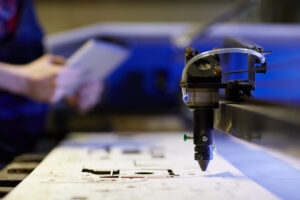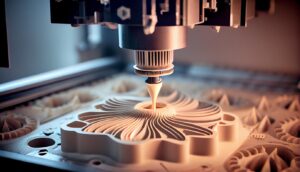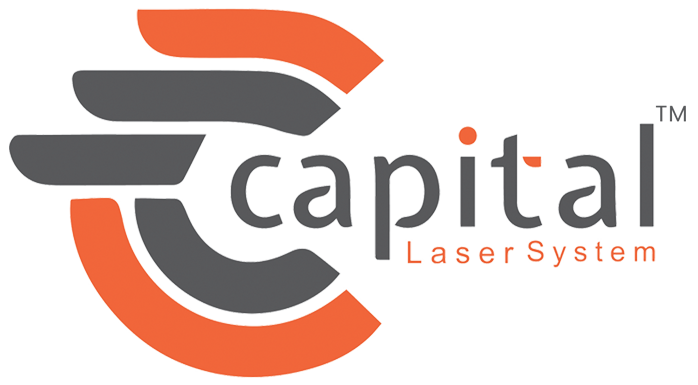The Future of Laser Cutting: Trends and Innovations to Watch in 2025
Table of Contents
- Introduction
- The Evolution of Laser Cutting Technology
- Key Trends in Laser Cutting for 2025
- Advanced Laser Sources
- Automation and AI Integration
- Increased Material Versatility
- Eco-friendly Practices
- How Laser Cutting Is Transforming Industries
- The Role of Capital Laser System in Driving Innovation
- The Future of Laser Cutting: Challenges and Opportunities
- Conclusion
Introduction
Laser cutting technology has revolutionized industries by offering precision, speed, and versatility. In 2025, laser cutting machines are expected to evolve even further, bringing new trends and innovations that will shape manufacturing, engineering, and production. As industries continue to seek more efficient and cost-effective solutions, Capital Laser System is at the forefront of these advancements, driving progress in laser cutting and marking technology.

The Evolution of Laser Cutting Technology
Laser cutting has come a long way since its inception. Initially, the technology was used for simple applications, but over time, it has developed into a sophisticated method used across various sectors, from automotive to aerospace. With the introduction of fiber lasers, CO2 lasers, and UV lasers, laser cutting has become more precise, efficient, and adaptable.
By 2025, we are likely to see even more advanced laser cutting machines capable of tackling even more complex tasks with greater accuracy and speed.
Key Trends in Laser Cutting for 2025
1. Advanced Laser Sources
One of the most significant innovations in laser cutting technology is the development of high-powered laser sources. In 2025, laser cutting machines will feature even more powerful and efficient laser beams, offering unparalleled cutting speeds and precision. These advanced lasers will be able to cut through tougher materials with minimal waste, boosting productivity and reducing operating costs.
2. Automation and AI Integration
The integration of automation and artificial intelligence (AI) into laser cutting machines is expected to revolutionize the manufacturing process. By 2025, laser cutting systems will be fully automated, minimizing the need for manual intervention. AI-powered machines will optimize cutting paths and improve material efficiency, allowing manufacturers to automate complex designs while maintaining high-quality output.
3. Increased Material Versatility
As industries demand more diverse materials for production, laser cutting machines will evolve to handle a wider range of substances. In 2025, advancements in laser cutting technology will make it possible to cut materials like titanium, composites, and even smart materials with precision. This increased material versatility will allow manufacturers to explore new possibilities and innovate across industries.
4. Eco-friendly Practices
Sustainability will be a major focus in the coming years. Laser cutting systems will adopt more energy-efficient and eco-friendly practices. This includes innovations such as reduced energy consumption, improved material recycling, and green technologies that minimize waste and promote sustainable manufacturing processes.
How Laser Cutting Is Transforming Industries
Laser cutting is already transforming industries, and its impact will continue to grow in the years to come. In 2025, we can expect further advancements in the following sectors:
- Automotive Industry: Laser cutting will continue to play a critical role in producing high-precision parts for vehicles, improving safety and performance.
- Aerospace: With laser cutting technology, manufacturers can produce lightweight yet durable parts, improving fuel efficiency and reducing costs.
- Medical Devices: Laser cutters are already used to create intricate components for medical devices. As technology advances, lasers will enable even more precise manufacturing of smaller, more complex parts.
- Electronics: Laser cutting will drive the production of compact, efficient components used in consumer electronics, from smartphones to computers.

The Role of Capital Laser System in Driving Innovation
As a leader in the laser cutting and marking industry, Capital Laser System is actively shaping the future of laser cutting technology. With a focus on providing cutting-edge solutions for industries across India, Capital Laser System continues to innovate, ensuring that manufacturers have access to the latest laser cutting technologies to stay competitive.
Whether it’s through fiber laser machines, CO2 laser cutters, or laser marking machines, Capital Laser System is committed to providing clients with advanced machinery that not only meets but exceeds industry standards.
The Future of Laser Cutting: Challenges and Opportunities
While the future of laser cutting holds exciting potential, there are still challenges to overcome. As technology advances, manufacturers will need to invest in upgrading machinery and staff training to fully harness the capabilities of the latest systems. Additionally, costs and integration complexities may present initial hurdles for businesses adopting new technology.
However, the opportunities outweigh the challenges. As laser cutting technology continues to evolve, companies that embrace these innovations will have a competitive edge, enabling them to produce higher-quality products at a faster rate, reduce costs, and contribute to sustainable manufacturing practices.
Conclusion
The future of laser cutting technology is brighter than ever. As we move into 2025, the combination of advanced lasers, AI-driven automation, and sustainability will reshape how industries approach manufacturing. Capital Laser System is at the heart of this transformation, offering state-of-the-art laser cutting and marking machines that empower businesses to stay ahead of the curve.
By embracing these innovations, manufacturers can look forward to enhanced productivity, improved quality, and reduced environmental impact in the years to come.
